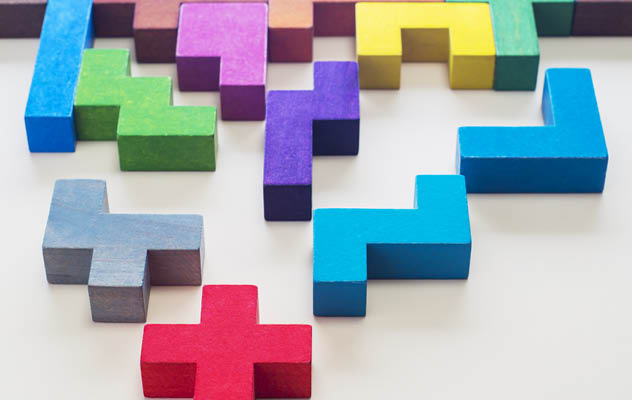
During my time as an Advanced Skills Teacher (AST) I spent time working with teachers in primary schools, supporting maths coordinators. Despite being there as a ‘maths specialist’ to support the teaching of maths, during my visits I learnt at least as much as the primary teachers with whom I worked. What I learned had a great impact in my own classroom.
One thing learned was how equipment can be used in lessons to help pupils explain their thinking. Pupils in primary school were for ever exploring maths through manipulatives (objects or equipment to help understanding), and explaining what they had done using these manipulatives.
Manipulatives can come in a variety of forms. I think of them as any physical object that students can move around to help explain mathematical concepts: interlocking cubes, counters, dominos used to explore triangular numbers, square numbers and other number sequences, dice (did you know that dice can be left-handed or right-handed?), Pentominoes geoboards, Cuisenaire rods and even pieces of A4 paper.
Back in my secondary school, I began introducing different equipment into key stage three lessons. It didn’t go well at first. Initially, students were more likely to use multi-link cubes to create toy guns than make linear sequences.
However, as their experience using manipulatives in maths lessons increased, students slowly got used to the fact that the equipment was available in all lessons, not just in one-off ‘special’ lessons. Eventually my students became more confident in using the manipulatives to explain their thinking, or to convince a friend, or show their working out.
We began using cubes in key stage 4 classes to explain more and more advanced ideas: to complete the square, find the difference of two squares and to factorise quadratics.
Increasingly, the use of equipment was not seen as something for ‘those students who found maths hard’. We began using cubes in key stage 4 classes to explain more and more advanced ideas: to complete the square, find the difference of two squares and to factorise quadratics.
Eventually, this equipment was always available for use in lessons and not just for specific lessons. Students found it useful to help them learn, and I found it led to a deeper understanding in their mathematics. Manipulatives are no longer restricted to primary classrooms but play a vital part in my secondary mathematics teaching.
You may also be interested in...
Using manipulatives to enhance understanding in secondary mathematics is a two day CPD activity in which participants explore how simple equipment can be used throughout secondary mathematics.
